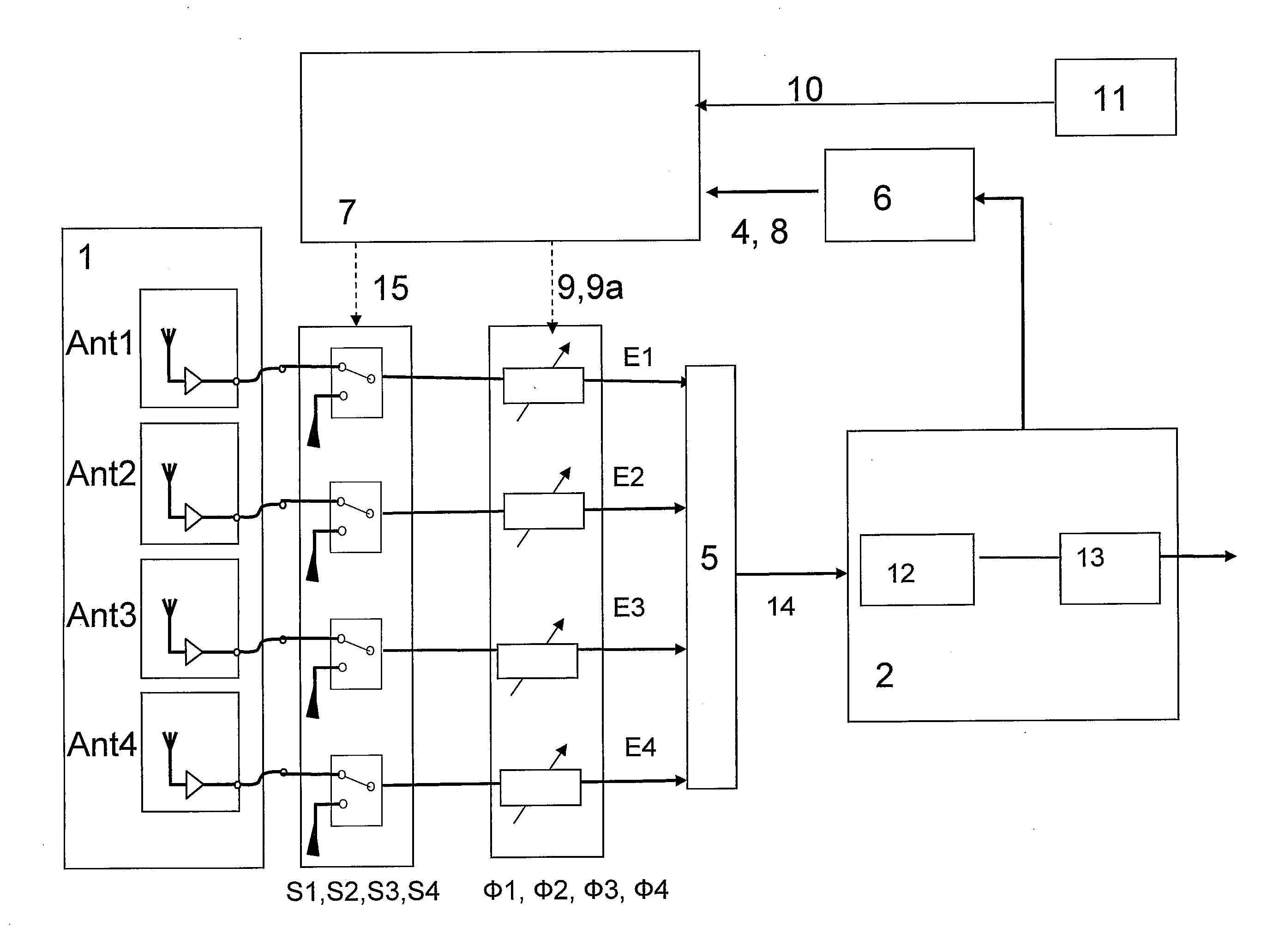Reception system with phase alignment of antenna signals
a technology of antenna signals and reception systems, applied in diversity/multi-antenna systems, digital transmission, polarisation/directional diversity, etc., can solve the problems of increasing technical effort and expenditure, and the inability to use ancillary modulation, so as to achieve the effect of improving efficiency
- Summary
- Abstract
- Description
- Claims
- Application Information
AI Technical Summary
Benefits of technology
Problems solved by technology
Method used
Image
Examples
Embodiment Construction
[0088]FIG. 1 shows the reception system according to the invention with a multi-antenna system having antennas Ant1, Ant2, Ant3, Ant4. There are also a plurality of individually adjustable switching elements S1, S2, S3, S4, which can each be connected to associated individually adjustable phase rotation elements Φ1, Φ2, Φ3, Φ4 . . . Φn. There is also a summation or combination circuit 5 for receiving the signals E1, E2, E3, E4, from each of the phase rotation elements. The summation or combination circuit 5 is for combining the reception signals E1, E2, E3, and E4 which are superimposed with the same phase in the summed or combined signal 14. There is a reception circuit 2 which has an input for receiving the combined signal 14. There are also HF-IF parts 12 and 13 disposed inside of the reception circuit 2. The output of this reception circuit 2 feeds into a signal level indicator 6 for displaying the level of the reception signal 14. The output of the level indicator 6 feeds into ...
PUM
 Login to View More
Login to View More Abstract
Description
Claims
Application Information
 Login to View More
Login to View More - R&D
- Intellectual Property
- Life Sciences
- Materials
- Tech Scout
- Unparalleled Data Quality
- Higher Quality Content
- 60% Fewer Hallucinations
Browse by: Latest US Patents, China's latest patents, Technical Efficacy Thesaurus, Application Domain, Technology Topic, Popular Technical Reports.
© 2025 PatSnap. All rights reserved.Legal|Privacy policy|Modern Slavery Act Transparency Statement|Sitemap|About US| Contact US: help@patsnap.com



